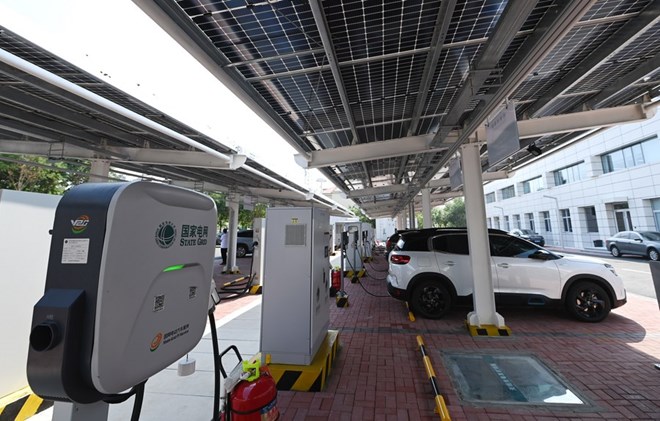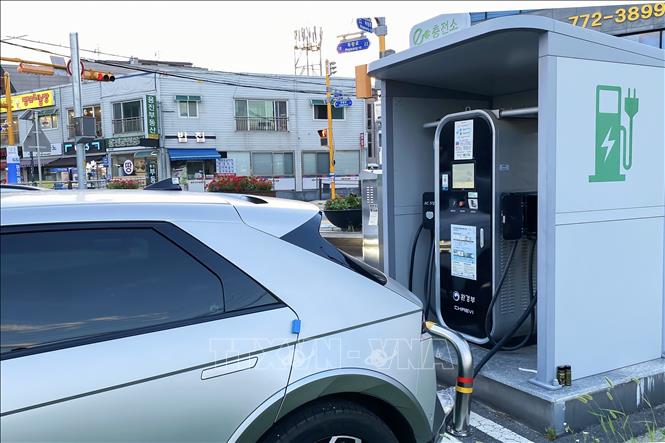
To keep up with the goal of zero net emissions, many countries around the world have been actively developing solutions to support electric vehicles. One of them is to build an infrastructure system of charging stations to quickly bring electric vehicles into people's lives.
India is one of the countries that are embracing cost-effective and eco-friendly modes of transport. According to the Indian Council on Energy, Environment and Water, in 2022, more than 1 million electric vehicles were sold in the South Asian country. By 2030, this number is expected to increase to around 14 million vehicles per year.
For the first time in India, the Maharashtra Housing and Area Development Authority (MHADA) has provided electric vehicle parking and solar power in residential apartments. Many individuals and construction companies have stepped up to install electric vehicle charging stations in residential areas so that residents can easily charge their vehicles overnight. This not only creates an additional source of income but also helps them attract more potential customers. Apartments equipped with electric vehicle charging facilities simplify the daily life of car owners, saving time and money.
China is also one of the countries accelerating the electrification of vehicles. Last September, oil company Shell and electric car maker BYD announced plans to build the world’s largest electric vehicle charging system in Shenzhen. The massive charging station will have 258 charging points with a total power generation capacity of 300,000 kW/h. Shell currently operates about 800 electric vehicle charging stations through joint ventures or wholly owned companies across the country.
When it comes to the development of electric vehicles, we cannot ignore the United States. The Jobs and Infrastructure Investment Act of 2021 approved $7.5 billion in funding for electric vehicle charging infrastructure. Most recently, the Deinflation Act provided tax credits for both passenger and commercial electric vehicles. The state of California announced that it would ban the sale of vehicles powered by internal combustion engines by 2035. California also requires that 3% of all parking spaces in commercial buildings be prepared with charging infrastructure. Since 2017, the city of Atlanta has passed an “EV Ready” ordinance that requires all new residential and public parking lots to accommodate electric vehicles. In addition, 20% of all commercial and residential parking spaces must be reserved for electric vehicles.
The number of charging points in the US is expected to increase from about 4 million today to about 35 million by 2030. The market for electric vehicle charging equipment could grow from $7 billion to $100 billion by 2040 at a compound annual growth rate of 15%. According to PwC analysis, the number of electric vehicles in the US is estimated to reach 27 million by 2030 and 92 million by 2040. Workplace and public electric vehicle charging systems are expected to grow the fastest through 2030.
In Europe, the number of public charging points increased by 48% in 2022 compared to 2021, from 320,000 to 475,000. The Netherlands is the leader in public charging infrastructure. In 2022, the country below sea level had the highest number of public charging points in the EU with 111,721, followed by Germany (87,674) and France (83,317). This means that 24% of all public charging points in the EU are located in the Netherlands, and the combined market share of the Netherlands, Germany and France is 59% of all electric vehicle charging stations in the EU in 2022.
Source


![[Photo] Visiting Cu Chi Tunnels - a heroic underground feat](https://vstatic.vietnam.vn/vietnam/resource/IMAGE/2025/4/8/06cb489403514b878768dd7262daba0b)























































































Comment (0)